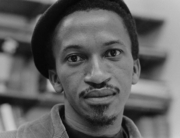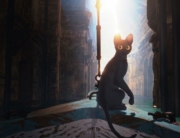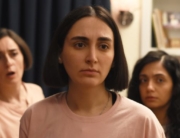What a curious job to be a museum guard, watching people watching art, and what a curious movie to match. There’s beauty in participating in such a long chain of observation, especially when the object at the end is so clearly and painstakingly adored. Writer-director-producer-cinematographer-editor Jem Cohen (there’s no doubt who’s the auteur) clearly treasures the many masterpieces on display at Vienna’s Kunsthistorisches Institut, the museum at the heart of this film both figuratively and literally. His camera lingers for countless minutes on details from Rembrandts and Bruegels, enough that the line between the setting and subject is thoroughly blurred.
Museum Hours makes the point that distinctions between such things are less important than the acts of careful examination that find rich narratives in the world and art alike. A museum guard, Johann, portrayed with unaffected warmth and realism by Bobby Sommer, encounters a Canadian adrift in Vienna while attending the convalescence of her cousin. Together they form tentative bonds of friendship that are at once light as a feather and the most substantial relationship in each of their lives.
As Anne, Mary Margaret O’Hara exhibits both a wholly convincing naturalism and a slight restlessness that complements Johann while also rendering her distinct. Johann, for all his social isolation and youthful reminiscences, comes across as fundamentally content, not prone to counterfactual thinking. By contrast, Anne seems adrift, her speech always hesitating, stumbling over itself in a self-effacing flow that hints at opportunities lost and regrets that can’t be fully voiced.
Their relationship changes in small, subtle ways, but its beginning and ending are given vastly less importance than its middle. Conventional storytelling is jettisoned for broad swathes of the film, but the episodic absences of the few characters we have come to know feels less like a loss and more like a natural extension of time’s ebb and flow. No one section is given primacy, no one element of the film overshadows the others. At any given moment, there is a candid sense of the object-as-object, the unfussy artistry of the compositions drawing attention to what is in the frame but going no further. This is what you look at, Cohen seems to say, and it deserves to be looked at.
The hypnotic, elliptical images, which circle back on themselves in a way that suggests they are meant to be seen as much as leitmotifs as pictures to deconstruct, blur the distinction between what is and is not worth looking at. It’s easy to let yourself sink into the languid pace, which is soothing to the point of being soporific. It also means that the sudden, brief moments of fully-fledged expressionism strike all the harder, particularly an episode in which several patrons of the museum appear completely nude. The stark and startling conceit echoes Anne and Johann’s matter-of-fact descriptions of a painting of Adam and Eve in the garden before the fall. The nudes give unexpected expression to this notion of innocence, strange and beautiful in their own right, composed and candid without hiding anything.
The overall result is an atmosphere that is both hermetic and lovely, pedestrian and just a touch exalted. “That was nice,” Anne might say, or “That was beautiful,” formulations she uses repeatedly to describe fleeting, ephemeral moments around the city, whether it’s a flock of pigeons taking flight, or an imposing, concrete building that survived WW II. Her choice of words is curious, since Cohen is prone to film the world in an unassuming style that lends no glamour to the proceedings. This Vienna is gray, wet, and empty, and the visuals echo the paintings in the museum without partaking in the monumentalism of their craftsmanship. The beauty of the city is hidden from view.
It’s with these images of Vienna that Cohen chooses to end the film, leaving Johann and Anne to decide their own fates. There are several static shots of the city, framed in a square aspect ratio that gently makes them unfamiliar. In voice-over, Johann describes the unassuming action taking place within the frame in the same way he has described the paintings in the museum, investing thought and feeling into the image with quiet conviction. The sounds of the world permeate the environs, reminding you of the scene’s mundanity even as the words build up its importance, describing a reality whose life will continue to tick on after the last frame fades to darkness.







For no apparently strong reason, a Montreal freelancer who can’t afford it drops everything to fly to Vienna to be by the side of a cousin she hasn’t seen for a very long time who has dropped into a coma. The Canadian has never been to Vienna and speaks no German. She’s alone. During a trip to an art museum she meets an aging security guard and they develop a friendship as they explore the art in the museum, especially paintings by Bruegel, and some of the simpler pleasures of Vienna in the gray of winter.
Over numerous scenes in the museum, in the hospital, and in the city, nothing much happens but there’s a lot of talk. What’s the filmmaker saying with this film? Undoubtedly, part of the message is that real life imitates Bruegel’s art. Part of the message is that life happens slowly, a little at a time. Unfortunately, these messages also come very slowly, as though sent by the filmmaker in Morse code.
I watched this movie with two close friends on a fall Sunday afternoon and we all had the same reaction to this movie. In the end, you would be well to classify this as a true “art” film, in more ways than one.